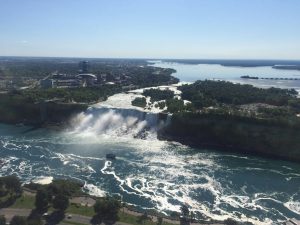Climate Migration Hotspots: Housing Markets Primed for Surge
As the effects of climate change become more apparent, one of the most visible and pressing consequences is the displacement of populations due to extreme weather events and rising sea levels. This phenomenon, known as climate migration, is expected to have a significant impact on housing markets in certain areas, where influxes of climate refugees will put pressure on already limited housing supplies. These locations, known as climate migration hotspots, are poised to experience a surge in demand for housing and subsequent changes in the housing market. In this article, we will explore the concept of climate migration hotspots and how they are set to shape housing markets in the future.
The Impact of Climate Migration on Housing Markets
Climate migration, or the relocation of individuals and communities due to climate-related factors, is a complex and multifaceted issue. It is estimated that by 2050, up to 140 million people could be displaced by climate change, with the majority coming from low-lying coastal areas in Asia and Africa. This mass movement of people will have a significant impact on housing markets, particularly in areas that are expected to receive a high number of climate refugees.
Identifying Climate Migration Hotspots
The term “climate migration hotspot” refers to a geographic area that is likely to experience a large influx of climate migrants. These locations are determined based on various factors, such as sea level rise, extreme weather events, and population density. According to a recent study by the World Bank, the top three climate migration hotspots are Sub-Saharan Africa, South Asia, and Latin America. These regions are expected to bear the brunt of climate change and will likely see a significant increase in the number of climate refugees in the coming years.
Impact on Housing Demand and Prices
The arrival of climate refugees in these hotspots is expected to drive up demand for housing, putting pressure on already limited supplies. This surge in demand will not only affect the availability of affordable housing but also lead to an increase in property prices. As a result, existing residents may struggle to afford housing, and those who are looking to buy or invest in property may find themselves competing with climate migrants for housing.
Risks and Challenges for Housing Markets
Potential for Displacement of Local Communities
While climate migration has the potential to revitalize struggling housing markets, it also presents significant risks and challenges. One of the main concerns is the potential displacement of local communities. As climate refugees move into these hotspots, they may be forced to compete with existing residents for housing, which could lead to gentrification and the displacement of lower-income households.
Strain on Infrastructure and Services
The arrival of a large number of people in a short period of time puts a strain on existing infrastructure and services, such as transportation, healthcare, and education. This strain can disrupt the functioning of these systems and lead to overcrowding and longer wait times for services. It also poses a challenge for local governments to provide adequate housing and support for both existing residents and climate migrants.
The Need for Adaptation and Mitigation Strategies
As climate migration is an inevitable reality, it is crucial for policymakers and stakeholders to develop strategies to mitigate its potential negative impacts on housing markets. This includes investing in affordable housing, implementing effective zoning and land-use policies, and providing support and resources for both existing residents and incoming climate migrants. Additionally, adaptation measures, such as building resilient and climate-proof housing, can help prevent displacement and ensure the safety and well-being of communities.
Conclusion
Climate migration is a complex and challenging issue that will significantly impact housing markets in certain areas. The rise of climate migration hotspots highlights the need for proactive measures to address the potential risks and challenges associated with this phenomenon. By recognizing the potential impact on housing markets and implementing adaptation and mitigation strategies, we can ensure a more sustainable and equitable future for both existing communities and incoming climate migrants.










